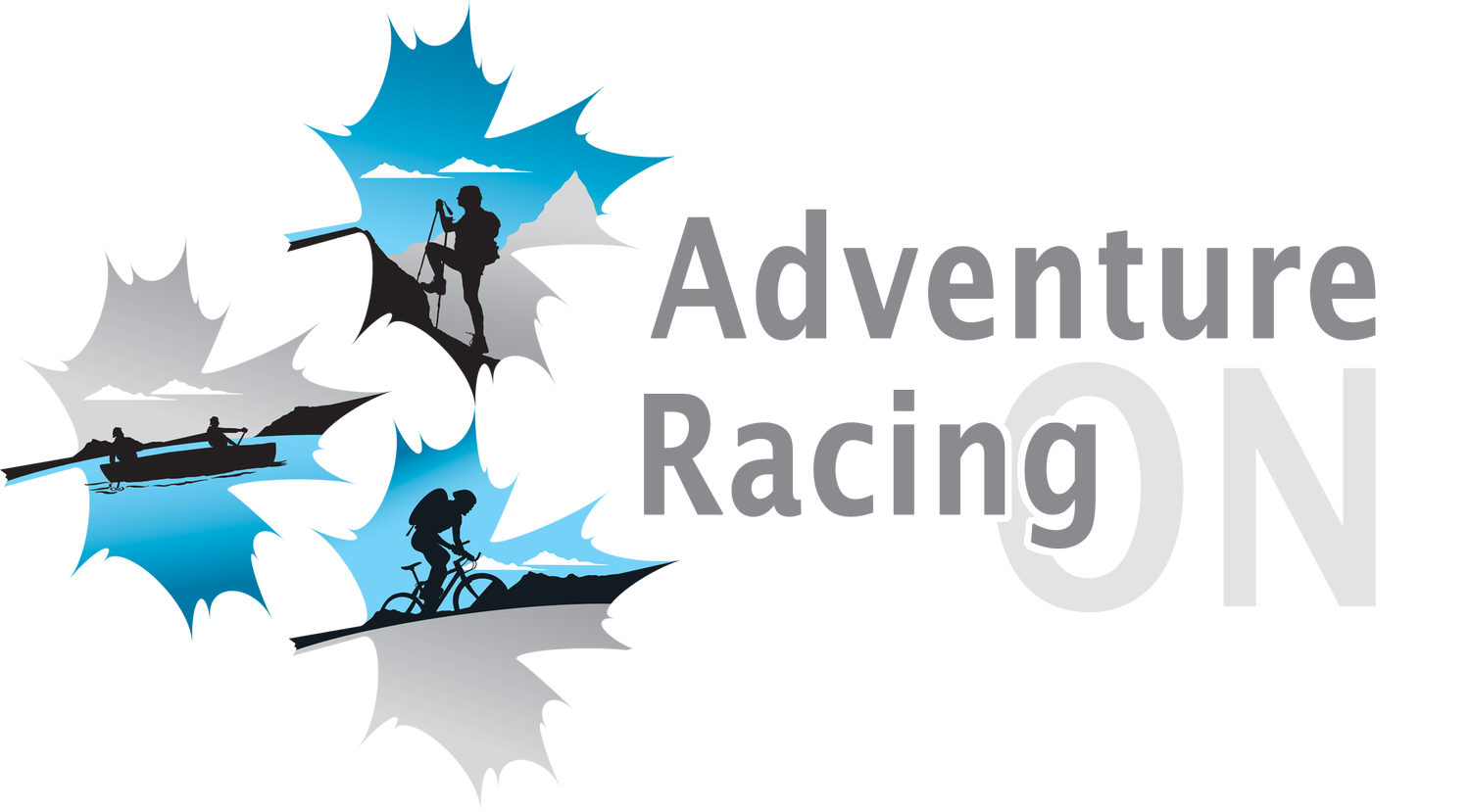By Pete Dobos
'Hike' course overall winners Team Hawk & Falcon approach the finish at Storm the Trent.
Thursday – sunny and warm
Friday – sunny and hot
Saturday – chance of thunderstorms
Sunday – chance of thunderstorms
Yup, even the weather knew it was time for Storm the Trent, and it too was gearing up for Canada's biggest adventure racing weekend.
On Friday afternoon, everything at the race HQ at Trudeau Park resort near Tweed was already in place and meticulously organized. Canoes were lined up near the beach, the registration tables were set up, and Sean and some staff were out placing race controls. It looked like the only thing not meticulously planned and organized would be the weather. But that's all part of adventure racing, isn't it?
The forecast slowly got less dire as race time approached, although for the race briefings on Saturday morning Sean Roper was still warning racers that there was a chance of storms late in the day. Given that both the Trek and Trek Elite events would be finishing with a paddling leg on Lake Stoco, it was time to go over the rules for thunder and lightning. These were dead simple: get off the water asap. Safety boats would be scooting around to make sure things ran smoothly.
Saturday saw the long course Trek Elite racers (104 of them) registering bright and early, prepping their maps, and then getting bussed out to their remote start at 0930. They would be biking, trekking, and paddling something on the order of 87km, depending on their route choices and how well they navigated. Speaking of which, this year's course was designed in typical Storm fashion, with some marked mandatory route sections – typically on the bike – mixed in with unmarked legs where navigation and orienteering would be important.
The 270 middle distance Trek racers were up next, getting bussed out to their remote start in the Vanderwater Conservation area. At 1100 they also began their adventure, following a shortened version - about 57km - of the Trek Elite long course.
Navigators in both races needed to be on their toes, as there were 3 supplemental maps in addition to the main map, and every one of them was a different scale, from 1:10 000 to 1:70 000. Furthermore, there were checkpoints to be found along the marked bike route, so racers needed to stay in touch with the map at all times. Several teams were caught out as a result of putting their heads down and hammering the bike, simply following the course markers. They then had no idea where they were along the route when it came time to look for the checkpoints, most of which were not easily visible from the trail/road.
The biggest challenge for all the Saturday racers, however, was the heat. It was sitting just below 30°C and humid. There was a fair bit of wind, but it too was hot and muggy and did little to cool off overheating racers. In fact, in typical wind fashion, it simply swirled around in such a way as to almost always be a headwind. How this happens is one of the great unsolved mysteries of the Cosmos.
There have been many hotter races, but this one presented a nasty perfect storm that made it much worse: it was the first race of the year for almost everyone after a long cold winter of likely reduced training, and it was also the first day over 20°C in about 5 months. Under-trained, non heat acclimated racers suffered and wilted in the heat; so much so that Sean wisely decided to provide water at a late checkpoint on the bike leg, which no doubt saved many racers from DNF-ing.
At the end of the day, the Highlands Wilderness Medical Team had been kept busy with numerous cases of heat exhaustion and mild dehydration. They were, as always, very much on the ball and there were no serious problems, so kudos to them.
The final leg for both courses was paddling on Lake Stocco, which allowed racers to finally cool themselves off. Racing is almost never easy, however, and in this case the withering heat was replaced by a stiff wind and non-trivial swells. Staying upright and on course across the wind was a technical challenge, and fighting into the wind was the paddling equivalent of going uphill. All teams had to work hard right up to the finish at Trudeau Park, where music, showers, food, drink, and rest were all the sweeter after between 4 and 9 hours of tough racing.
Sunday morning saw another large crowd of 293 eager racers lining up at race HQ, getting set to take on the Hike short course. This is the major gateway race to adventure racing, and routinely sees parent-child teams with kids as young as 6 or 7 taking part. Fortunately for them, the temperatures had dropped a fair bit, as had the winds. It was, in fact, one of the most perfect days for racing that Storm the Trent had seen for many years.
The Hike course was a further truncated version of the other two races, taking racers through about 40km of trekking, biking, and paddling. Despite having may rookie racers taking part, this day saw almost no DNFs, thanks in large part to the weather. Even the lake cooperated and remained almost mirror calm throughout the race. There were many smiling faces crossing the finish line at the end of the day, capping yet another successful Storm the Trent weekend.
Results and photos are available at www.stormthetrent.com/results.htm

